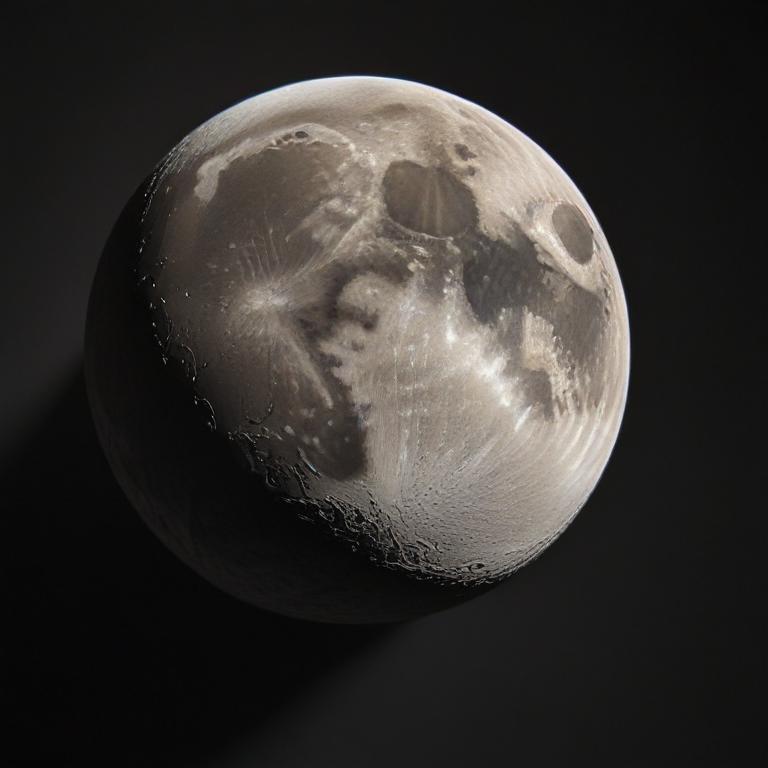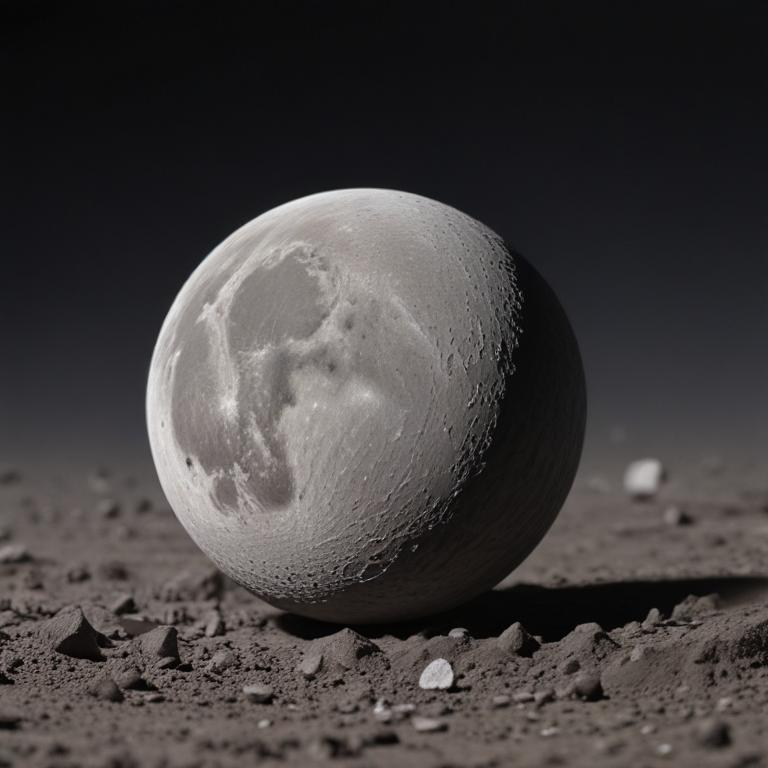发音 (Pronunciation):
IPA: /muːn/
中文近似: 木恩
中文意思与词性 (Meanings & Part of Speech):
- 月亮;月球(地球的天然卫星) (n.)
- 对(某人)撅屁股(俚语) (v.)
例句 (Examples):
1. The moon was full and bright last night.
(昨晚月亮又圆又亮。)
2. He got in trouble for mooning the crowd at the concert.
(他因为在音乐会上对人群撅屁股而惹了麻烦。)
用法提示 (Usage Tip):
moon 通常作为名词表示“月亮”,而作为动词“moon”意为撅屁股,是俚语且非正式用法。注意区分与“month”(月份)等词形近义异。
更多关于 "moon" (More about "moon")
单词来源 (Etymology)
“moon”一词来源于古英语“mōna”,其根源可追溯到更早的日耳曼语和印欧语系,原意即为“发光体”或指月亮。
词根词缀解析 (Root & Affix Analysis)
“moon”为基础词,无常见前后缀构成,直接表示“月亮”。
“moon”的字母与词根个性化解读
字母象形/引申义 (个性化参考)
- 字母 'm' 的象形或引申含义可能包括: 山 (象形) -> 高大, 连接; 手 (男人劳动); 命令; 凸起 (嘴); 思维; 水面波纹; 音变: M=N=L=R; M=B=P=F=V。
- 字母 'o' 的象形或引申含义可能包括: 眼睛/嘴 (圆形) -> 张开, 转动; 圆柱; 音变: A=E=I=O=U=W=Y。
- 字母 'n' 的象形或引申含义可能包括: 水 (M=N); 鼻音 (nose); 突出/生长/新生; 门 -> 否定 (no, not); 连接; 音变: N=M=L=R。
学习提示:以上针对单词 moon 的字母和词根解读,主要基于提供的特定象形及词根资料。这些提示旨在启发联想,而非绝对定论。更通用的记忆规则和原则请参考首页。英语词源复杂多变,实际应用中请结合更全面的词源词典和语言学知识进行深入学习。
常用词组 (Common Phrases)
- moonlight: 月光
- once in a blue moon: 千载难逢;极其罕见
其他语言 (Other Languages)
- 德语: Mond
- 法语: lune
字母整体创意联想
‘moon’ 这个单词中有两个 'o',就像两轮圆圆的月亮连在一起,而两个 'n' 象征着夜晚的平静和宁静。
逐字母创意解读
中文谐音助记
‘moon’ 谐音“木恩”,可以想象成“木头上挂着一轮银色的月亮,送来夜晚的恩赐”。
相关电影/名言
"That's one small step for man, one giant leap for mankind."
(这是个人的一小步,却是人类的一大步。)
- 《阿波罗13号》(Apollo 13) (1995)
趣味知识/故事
在西方文化中,月亮常被拟人化为代表神秘和浪漫。不仅如此,在1969年第一位人类阿姆斯特朗登上月球时,他的那句名言‘这是个人的一小步,却是人类的一大步’,成为人类探索太空的象征。此外,‘mooning’(撅屁股)作为搞怪或抗议行为,也常出现在欧美幽默中。
拓展信息
moon 除了本义‘月亮’外,作为动词时有非正式俚语用法,表达撅屁股(常带搞笑或抗议意味),正式场合中应避免使用。
该词还广泛出现在诗歌和文学作品中,诸如‘honeymoon’(蜜月)、‘moonlight’(月光)、‘moonbeam’(月光束)等多种搭配。
‘once in a blue moon’ 是常见成语,表达罕见或几乎不可能的事件。
网络参考 (More about "moon" from the Web)
Moon - Wikipedia
The Moon is Earth's only natural satellite.It orbits around Earth at an average distance of 384 399 km (238,854 mi; about 30 times Earth's diameter).The Moon rotates, but keeps facing Earth with the same near side.This tidal locking results from Earth's gravitational pull having synchronized the Moon's rotation period to its orbital period (lunar month) of 29.5 Earth days.
Earth's Moon - Science@NASA
Like Earth, the Moon has a day side and a night side, which change as the Moon rotates. The Sun always illuminates half of the Moon while the other half remains dark. NASA's Lunar Reconnaissance Orbiter (LRO) mission has mapped the entire lunar surface, including the Moon's near and far sides, down to a scale of one meter.
The moon: Facts about our planet's lunar companion
The moon's atmosphere contains many types of atoms, including oxygen, nitrogen, carbon monoxide, carbon dioxide, helium and even tiny amounts of water. It also has weirder chemicals, such as argon ...
更多图片 (moon More Images)

